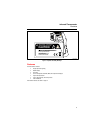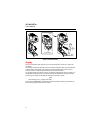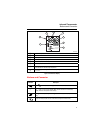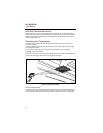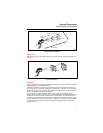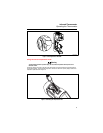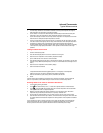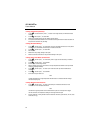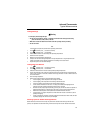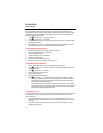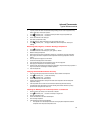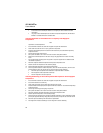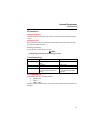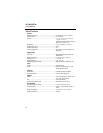
561 HVACPro
Users Manual
14
wall you should find parallel isothermal rows indicating the location of heat tubes below the surface.
Perpendicular to the outside wall, you should find rising and falling temperatures at equal distances. High
temperatures indicate you are scanning a heat tube beneath the floor surface, low falling temperatures
indicate a space between the heat tubes.
1. Press
D
and then press A to select HI emissivity.
2. Press
C
and then press A to select MIN.
3. To locate radiant heat tubes in floor, temporarily elevate the loop temperature to create hotter spots
for identifying tubing runs.
4. Before releasing trigger, press
A to toggle between MIN, MAX, DIF floor temperatures and record
the temperatures for future comparison and trending under similar conditions.
Testing Radiant Heat Applications
1. Operate radiant heat loop until steady state conditions are achieved.
2. Attach the thermocouple to supply of radiant loop.
3. Record the supply temperature.
4. Attach thermocouple to return of radiant loop.
5. Record the return temperature.
6. Difference is Delta-T (temperature difference).
7. Repeat for each loop to zone and balance for equal Delta-T’s.
Testing Water Heater Insulation
1. Connect thermocouple probe to obtain ambient temperature near water heater.
2. Press
D and then press A to select HI emissivity for vinyl jacketed insulation or painted metal
jacketed water heaters.
3. Press
C and then press A to select DIF.
4. Aim the Thermometer at the water heater.
5. Scan the water heater jacket.
6. Scan in horizontal rows from top to bottom
7. Press
C and then press A to read MAX and DIF jacket temperatures. Record your readings.
• The closer the jacket temperature is to ambient temperature, the less jacket losses there are.
• Standby losses account for a majority of the water heater energy expenses. Increase water
heater insulation to reduce standby losses.
• Standby losses are losses when water is not being re-heated by the burners or the elements.
When the water heater is idle (standing by) and no water is being drawn, heat loss through the
jacket (and flue on oil/gas systems) are waste heat losses that can be reduced by increasing
insulation and/or lowering the temperature setting.
Testing Steam Traps
Steam traps open on low temperature to allow steam flow to trap. Steam traps close at steam temperatures
to stop steam flow. As steam temperature drops, traps open to allow more steam flow and to return
(“drain”) condensate.
• If temperature is low in steam pipe, low in trap and low in condensate return, trap may be stuck
closed. If temperature is high in steam pipe, high in trap, and high in condensate return, trap may be
stuck open.
• If temperature is high in steam pipe, high in trap, and slightly lower in condensate return, trap is
probably operating properly.



